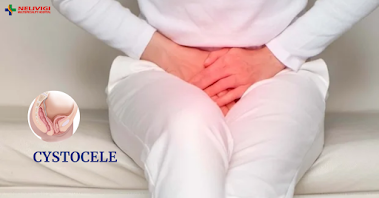Urolithiasis: Symptoms, Evaluation And Diagnosis, Treatment
Urolithiasis is the
technical term for stones in the urinary tract. The urinary tract extends from
kidneys, ureters, urinary bladder and ends in the urethra. Calculi or stones
can be found anywhere in these organs.
However, a majority of the urinary tract stones are produced
in the kidney and travel along the track to reach these organs.
What are the symptoms of stones in the
urinary tract?
Pain is the most common symptom. However, the character and
type of pain depend upon the location of the stone. It is as follows:
·
Kidney stone: The person
may have a dull aching pain in the back on either side of the midline. The pain
may be localized or it could radiate to the groin. The pain can be mild or
moderate but usually not very severe. It could be very misleading in the sense
that it may occur once or twice and may disappear and not appear for the next
few days or even weeks. This may give a false sense that the stone has passed
off.
Surprisingly the pain could present as ‘gastritis’
which can mislead the doctor and the patient into treating it with antacids.
This is quite a common presentation!
The patient may also have nausea and vomiting which
again could be misconstrued as gastritis.
·
Ureteric
stone: Pain is a predominant symptom in people with stone in the
ureter. The pain is very severe in intensity and described as colicky in type.
It is described as gripping or squeezing in type and radiates typically to the
groin and even to the upper thigh. It may not reduce despite multiple
analgesics and even injection painkillers may not work well at times. Most
often it is accompanied by vomiting. The patient will not be able to lie still
and will be wriggling and constantly moving on the bed.
·
·
Urinary
bladder stone: These stones may be dropped down stones from the kidney
through the ureter or they could be produced in the urinary bladder itself.
They are formed in the bladder in children due to nutritional deficiencies and
in the elderly due to prostatic enlargement. The person may have burning
urination, painful urination, blood in the urine, urgency in urination or lower
abdominal pain. Sometimes it can result in complete urine blockage necessitating
emergency treatment.
A bladder stone may migrate further down into the
urethra leading to complete blockage of urine with severe pain.
Evaluation and diagnosis of urinary
tract stones:
The mainstay in the diagnosis is the ultrasound scan. It is
easily available and diagnoses all renal stones and many ureteric stones. There
are some ureteric stones that are not seen on ultrasound due to interference by
bowel gases. In such cases, a CT scan will help in the accurate diagnosis
albeit at a higher cost. X rays are not commonly done now as they fail to
detect small stones and radiolucent stones.
Treatment of kidney stones:
The treatment of urolithiasis depends upon many factors. They
are:
·
Location of the stones
·
Size of the stones
·
The hardness of the stones
·
Patient’s symptoms
·
The degree of obstruction caused by the stone
Usually, kidney stones which are about 3-4 mm are not treated
because they do not cause symptoms. Larger stones are treated because there is
a chance that they may migrate into the ureter and cause a blockage. The treatment
of such stones is either by ESWL or endoscopy. ESWL is the breaking of the
stones by using shock waves. It is a non-invasive, method causing little pain.
Anesthesia is not needed and the patient is not hospitalized. Endoscopy is done
using a flexible endoscope and the stone is fragmented using a laser. This
procedure is done under anesthesia and the hospitalization is for 1-2 days.
After the procedure, a stent is kept to facilitate the passage of stone
fragments. This stent is removed after 3-4 weeks.
If the stone is in the ureter, it is treated by many methods.
If the stone is small,i.e less than 5-6 mm, it is treated by medicines. However
medical management is not always successful. In such cases, endoscopy or ESWL
are chosen to treat the stone. The choice depends upon many factors. Hard, a
large stone is better treated endoscopically as ESWL fails in such stones. The
choice also depends upon the desires of the patient as some want only
noninvasive methods of treatment and some want more effective treatment.
To know more, logon to: www.nelivigimultispecialityhospital.com

Comments
Post a Comment